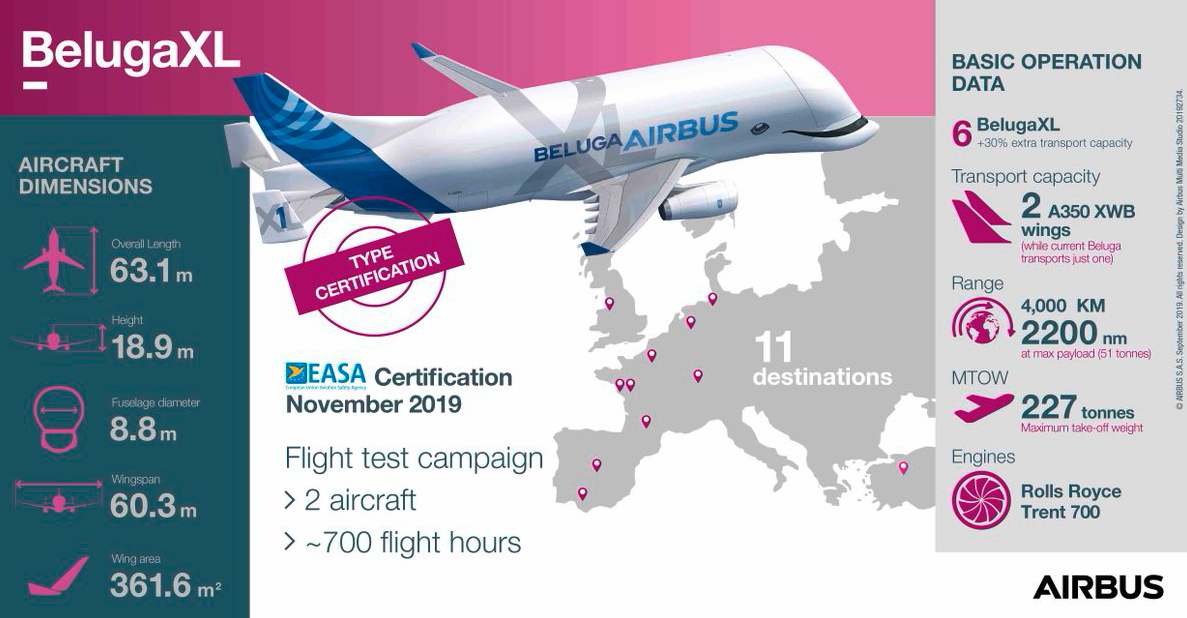|
The BelugaXL has received Type Certification
from the European Aviation Safety Agency (EASA), paving the way
for entry-into-service by early 2020.
Being seven metres longer and one metre wider than its
BelugaST predecessor, the BelugaXL has 30% extra transport
capacity.
With the largest cargo bay cross-section of all
existing cargo aircraft worldwide, the BelugaXL can carry two A350
XWB wings compared to the BelugaST, which can only carry one.

With
a maximum payload of 51 tonnes, the BelugaXL has a range of 4,000
km (2200 nm).
The aircraft gets its stamp of approval
following an intensive flight test campaign that saw the BelugaXL
complete more than 200 flight tests, clocking over 700 flight
hours.
In total, six aircraft will be built between 2019 and 2023,
gradually replacing the current fleet of BelugaST transporters.
Launched in November 2014, the BelugaXL is based
on an A330-200 Freighter, with a large re-use of existing
components and equipment, the BelugaXL is powered by Rolls Royce
Trent 700 engines.
The lowered cockpit, the cargo bay structure
and the rear-end and tail were newly developed jointly with
partners, giving the aircraft its distinctive look.
The BelugaXL is the latest addition to Airbus’
transportation portfolio. While air transport remains the primary
method for transporting large aircraft components, Airbus also
uses road, rail and sea transport to move parts between its
production sites.
Like the BelugaST, the aircraft will operate
from 11 destinations in Europe.
|
Headlines: |
|
Published on TravelNewsAsia.com at:
https://www.asiatraveltips.com/news19/1411-BelugaXL.shtml
See latest
Travel News,
Interviews,
Podcasts
and other
news regarding:
Airbus,
EASA,
BelugaXL.
|

